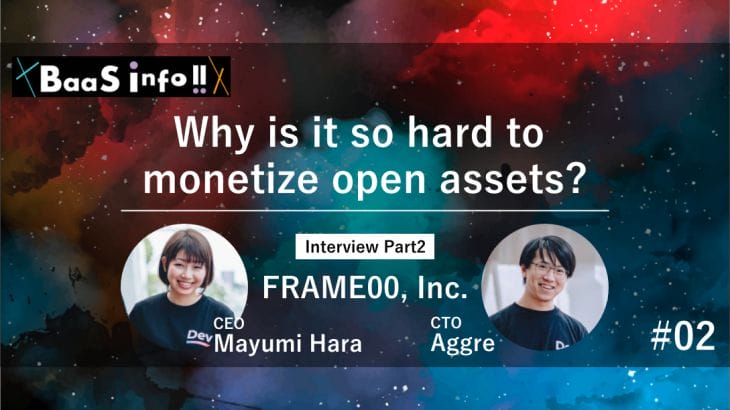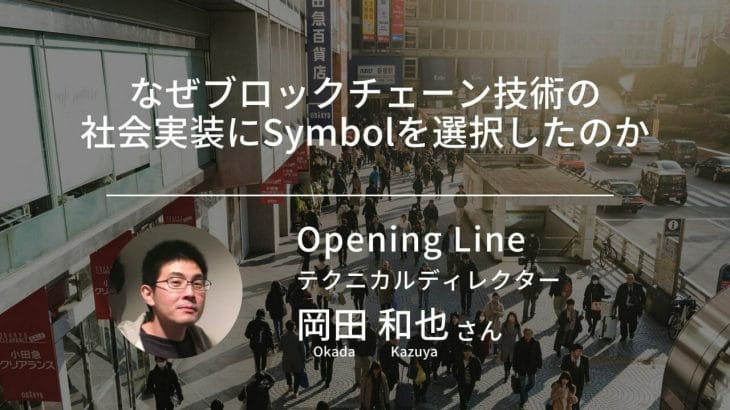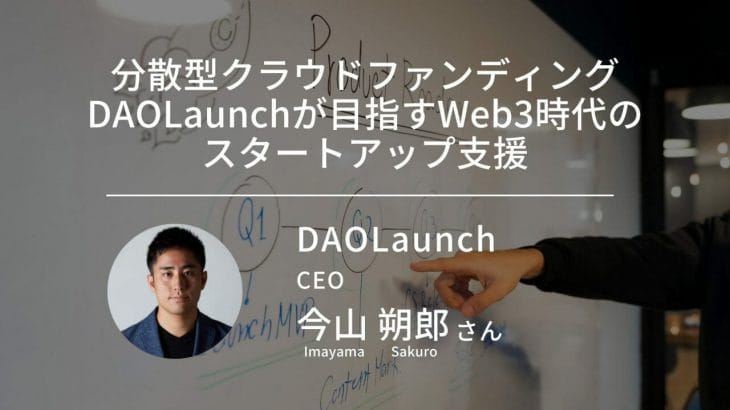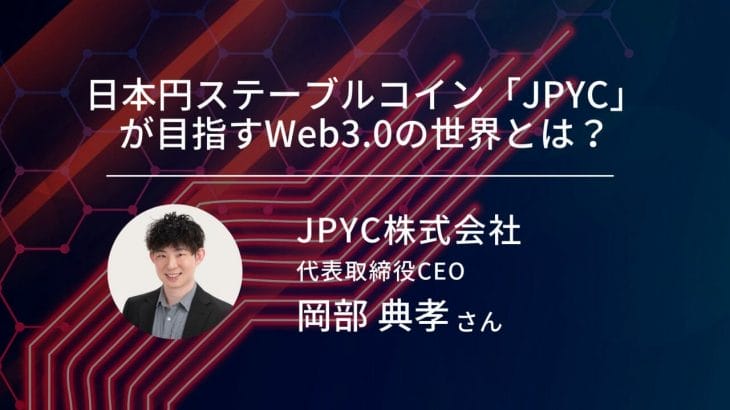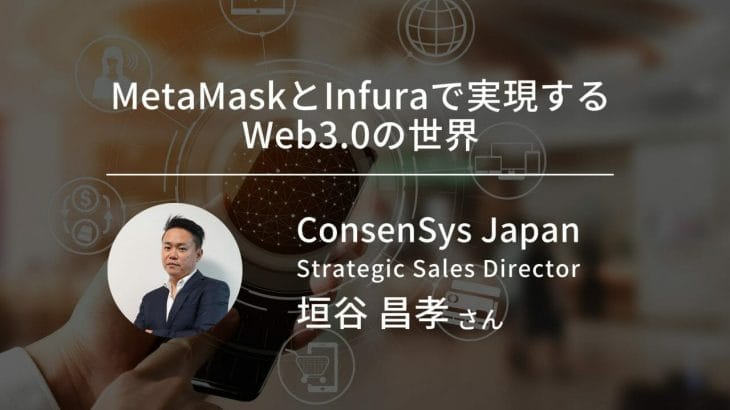
Introduction
The original Japanese version is available at the following link: FRAME00 CEO 原麻由美氏・CTO aggre氏【特別インタビュー後編】
A special interview to spotlight people who play an active part vigorously in the blockchain world. Guests for this time are Mayumi Hara (CEO) and aggre (CTO) from FRAME00, Inc.
The interview is divided into two parts, and this time, we’ll focus on the difficulty in monetizing Open Source Software(OSS), and establishment of FRAME00.
【Profile】
CEO: Mayumi Hara
Mayumi Hara is a serial entrepreneur that has been building brands since 2011 in various industries. She spent 2014 studying the value creation gaps for Japanese artisans working on and preserving Japanese temples. In 2015, after studying the creator industry and building relationships, she incorporated Frame00. Frame00 is developing Dev Protocol which uses blockchain to address the incentive models for supporting open assets, especially OSS.
CTO: Aggre
Aggre is a committed Open Source software community member who utilizes the latest tech stacks and concepts to solve problems. Aggre is an organizer of Japanese OSS communities like Web Platform Study Group (formerly Polymer Japan).
Why is it difficult to monetize open assets?
— What do you think is the reason why people find it difficult to continuously monetize Open Source Software (OSS)?
Mayumi: We think monetization is not only a challenge in open source, but a challenge in assets as a whole. There’s never been an adequate business model for it. Being open is regarded as “free of charge”, so nobody pays for it, which is the established narrative we face.
There is a monetization model called Freemium, but not all OSS developers are able to build a business model in Freemium. In addition, some OSS developers don’t want to offer subscriptions. There are instances when creators can’t offer Freemium models, and don’t have any other monetization methods for their open assets.
What is Freemium?: A business model in which people can get its basic service for free but have to pay for advanced function.
To be useful in society – That’s why it’s open
Mayumi: A number of our users request that we integrate YouTube to Dev Protocol. Youtube users can watch content for free while the advertising revenues, generated by creators and users, is marginally shared with creators. Youtube’s current model is highly dependent on its algorithms, advertising revenue, and profit sharing with creators. Apart from YouTube, we have few methods to monetize contents created by creators.
Aggre: Creator’s YouTube assets tend to be limited to videos. We have other free open source assets such as research articles and journalism that are valuable because they’re open.
Mayumi: Some creators think that they want to create open assets. It’s not that they want to monetize them under the limited and closed condition. Rather, they just want to provide useful and informative creations for society, so they make them open. Ironically, that makes their monetization challenging.
Aggre: Without changing its license, in other words, changing the advantage of openness, we have to think of alternative monetization methods. That’s the hard-to-solve problem when we discuss open asset monetization. Without modifying the license we couldn’t monetize the asset. We had to change it if we start to monetize by charging.
We haven’t had a system where we can monetize without changing the license, or without losing the “openness”. There wasn’t an alternative besides relying on donations.
— Recently (as of September 14, 2020), Wikipedia has been asking for donations.
Aggre: If it were not for Wikipedia, we would all be in trouble. If they said, “We must close our service because we haven’t received enough funding.”, then we couldn’t object their decision. This shows the necessity of a monetization alternative for open assets to donations.
Establishment of FRAME00 originated from the challenges in traditional culture.
— Now I can see that we need a model where creators with open assets can monetize except donation. What was the very start of FRAME00 like to realize it?
Mayumi: FRAME00 was established in 2015, and its focus was traditional culture. When I was in marketing I had an opportunity to work with traditional artisans and carpenters of Japanese shrines. After meeting them, I noticed that their company’s annual turnover was less than 1/10th of a gaming company, although their work was highly valuable to tourism.
I was shocked when I heard that companies with talented creators made less than 1/10th of a gaming company. These creators preserve Japan’s national treasures that are 100s of years old. I knew they couldn’t solve this value creation gap through restructuring their business because it’s a structural issue in the open asset market.
Rather, I thought strong reform was required to address the structural issues in the open asset market. Additionally, a solution to the challenges where valuable open assets are not economically valued. That’s the beginning of our company.
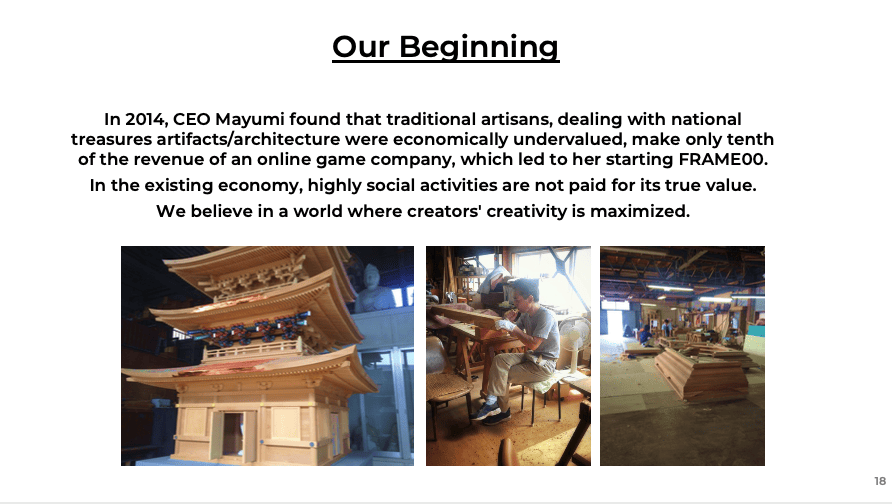
Necessary things for us were left after pivot.
Significance in user selection
— At first, traditional culture looked unrelated to Dev Protocol, but it has a common point on open assets, as they are not economically valued. I think there should be some pivots to form Dev Protocol. Could you tell me the forming process for it?
Mayumi: In the beginning of FRAME00, we looked for a monetization method for creators and artists. We tried various business models such as selling their works in e-commerce, creating contents, and increasing media awareness, but none of them showed promise.
Aggre, our company’s current CTO, joined FRAME00 in 2017 when we were desperately looking for another solution for monetization. After that, we started examinations on service for creators including developers.
In 2018 we released our first solution which was a messenger for creators with settlement functionality. Developer feedback was mostly positive. Developers mostly said, “Great idea and technology”. On the other hand, artist and illustrator feedback was not so positive because of the user experience.
It was a precious experience for us to receive completely different feedback from our users. After this we began to discuss the importance of targeting users. Shortly after we decided to focus entirely on developers. Many iterations later we gradually arrived at the current Dev Protocol.
A system where creators can monetize just by creating.
Aggre: After the pivot, essence was left for us. What we noticed after releasing the messenger with settlement functionality was that the feature was rarely used, although they’re in the situation where users cannot monetize without using. Considering the product’s feedback we thought just providing the monetization method wasn’t very effective for users.
When we started to research creators’ monetization options we discovered that their only option was donations. We came to the conclusion that we had to provide creators another solution in which creators can monetize their open assets themselves.
That’s why Dev Protocol is an extremely simple scheme for creators. We don’t provide them with other methods like settlement function. All they have to do is continue to create, as they can monetize open assets per se.
Our first step was releasing a product. The next step was to narrow down our users by analyzing their usage. Then finally, we reached Dev Protocol.
Future prospect of Dev Protocol
— Could you tell us Dev Protocol’s roadmap?
Aggre: We’re running several sub-projects, and one of them is the development of “Khaos”, an oracle solution. With Khaos, people can bring data on-chain while hiding confidential information such as access tokens. Currently, Khaos is for Dev Protocol’s personal usage, but we’re planning to expand its access.
Users can expand the area(genre) of monetization by themselves. We’re doing its expansion, and we’ve recently completed GitHub integration, and are planning an integration with YouTube (as of September 14, 2020).
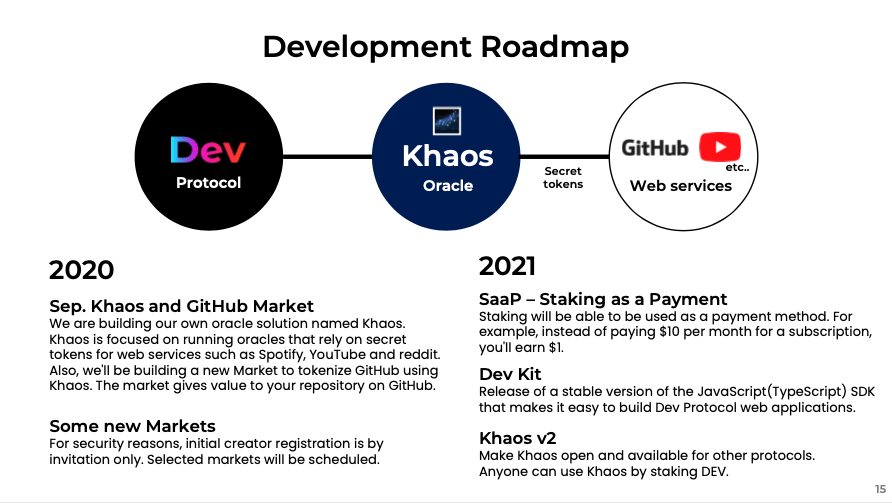
We’re working on improving the user experience of Stakes.social which is Dev Protocol’s interface. Other than that, we’re preparing for the start of liquidity incentives and new token models.
For people and firms interested in Dev Protocol
— It seems you have many upcoming updates. Do you have any messages for companies and developers who become interested in Dev Protocol?
Aggre: Basically, our protocol is middleware. We think the expansion of Dev Protocol’s Dapp ecosystem is going to be highly significant. We’re also aiming to expand the subject of monetization in the areas such as GitHub and YouTube. We call them markets in our Whitepaper. We’re also excited to see more firms create Dapps in the Dev Protocol ecosystem.
There are two pillars that we think essential: “By using existing assets that are tokenized on Dev Protocol, developers create Dapp” and “Developers creating a market so that people can turn creations into assets with Dev Protocol.”
— Thank you. Could we join your Discord if we want to join the ecosystem of Dev Protocol to make Dapp and markets?
Aggre: Yes. Please join our Discord.
Dev Protocol’s community on Discord : https://discord.gg/VwJp4KM
A world where people’s creativeness is maximized is surely exciting.
— Last but not least, could you tell us how the world would be like, if all innovators are evaluated and people can sustainably challenge?
Mayumi: We’re aiming for the world where creative power is maximized. When creators pursue what they want to create, a creative world would be realized.
What we have to solve the most is to ease creators’ anxiety toward money in order to embody such a world. If they are stressed out on financial matter, they cannot maximize their creativity. They may feel that they need to belong to a company to achieve creative freedom. Removing financial burden has a huge impact on creators. That’s why our primary aim is to remove such financial anxiety of creators.
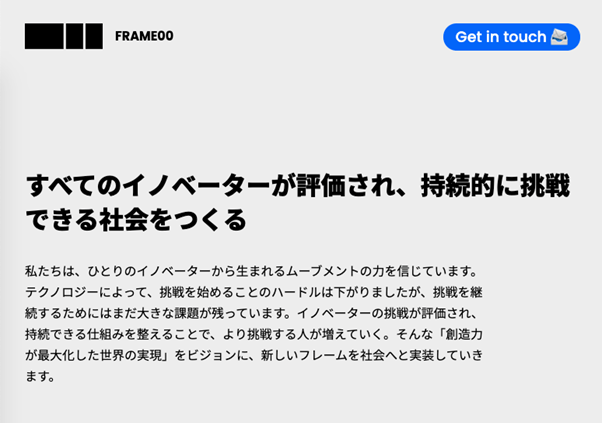
We also think that if creators can monetize just by creating what they want to create, then they don’t have to work for a company. As a result, creators can focus more on maximizing value.
If people can create freely and work flexibly, industry itself becomes open. Thanks to the monetization of open assets, creators don’t have to profit with closed environment. Open assets would increase, and in the end, we think the industry will move towards more open assets.
Aggre: Although OSS didn’t have any appropriate way to monetize, its usefulness has been recognized. It has experienced some difficulty, but it has played an important role in the world’s innovation. Without OSS, Ethereum and Bitcoin wouldn’t have been born. Since the collaboration was open innovation was much quicker relative to other tech sectors. If everyone had developed in siloed then we wouldn’t enjoy blockchain’s current capabilities.
It’s obvious that we have a challenge in monetizing open assets. If we can get rid of financial anxiety, we might see technological and cultural innovations at every area, as seen in OSS world. The world where we can freely maximize creativity will be very exciting.
— That surely sounds intriguing! I also want to see the world where people can fully show their potential and can create what they want to. Thank you very much for coming to our interview today.
The Part 1 is available at the following link: FRAME00 CEO Mayumi Hara and CTO aggre Special Interview Part 1

